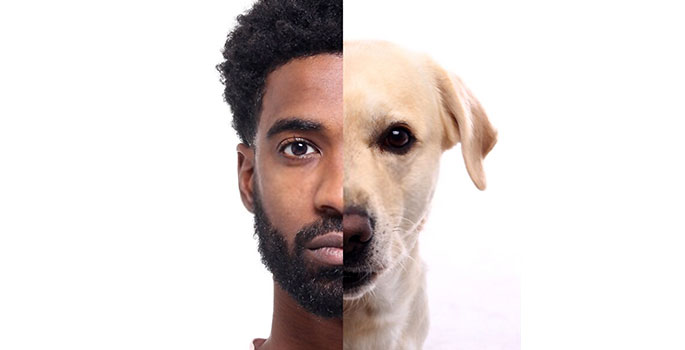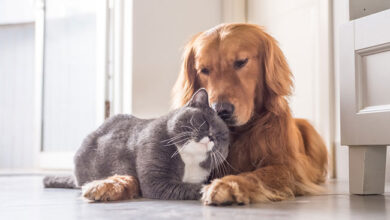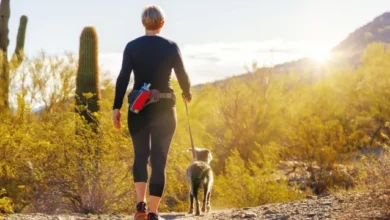
Hair plays a vital role in both humans and animals. It acts as a protection against cold weather as it serves as a source of heat and insulation and even from ultraviolet radiation exposure.

The hair in the human body maintains the internal temperature regulated by trapping more heat. For protection, the hairs of mammals like porcupines and hedgehogs, which are quills and pines, served as their primary protection from predators.
Read More:
- Top Benefits of Using a Pet Bowl | Buying Guide
- These 5 Tips Will Keep Your Dog’s Coat Healthy
- Five Vital Rules When Visiting A Dog Friendly Bar
- Necessary Routine Care Tips For Dogs That You Shouldn’t Skip
- 10 Ways to Groom Your Dogs
Hair comes with a variety of textures. Its three main aspects include volume, consistency, and curl pattern. There are classifications in hair that range from being wavy, straight, curly, kinky. It is divided into three categories, which are fine, medium, and coarse.
To define the resemblance of human and animal hair, let’s clarify and establish first what is human hair and what is animal hair or fur. So, get on your comb and your strongest holding hair wax, because, it is time to uncover one of the secrets of the universe.
What is Human Hair
Humans are covered with hair. It is present all over the body. Parts such as palms, feet, and lips, are left out since it is glabrous skin and mucous membranes. There are four types of human hair, which are: primordial and lanugo (the early hair); value (the childhood hair); and terminal (mature hair).
In ancient times, human hair was a symbol of your social status in society. Facial hair, for men, suggests the symbol of hitting puberty. The presence of white hair in your scalp or baldness is a sign of old age or, at some point, genetics. Hair color and texture depict ethnic ancestry or group membership. In the 1920s, as an act of rebellion against the traditional roles of women. Women cut their hair short, which reflects bobbed hair. This way, hair has an essential place in social significance in human beings.
What is Animal Hair
One of the most notable features of all mammals is their hair. Its importance range from their protection and the overcoming temperatures. Sometimes, hair is a helpful tool for mammals to attract sexual mates and it could serve as a camouflage. There are exceptions where an Aardvark prefers scales over hair. There are three types of animal hair which are the bristle, wool, and vibrissae. These types of hair are crucial for the lifestyle of mammals as they imbue different functions.
Vibrissae is a long stiff hair that is more known as the whiskers. Its function in purpose is tactile and sensitive. The bristle hairs will perform as a guard hair or coat. The colors of bristle hair vary from animal to animal species and others. As such, it gives them a distinctive and unique appearance. The wool hair makes up the fur of an animal. It acts as an insulator in animals such as goats and sheep.
One crucial thing, why the hair in animals is vital for them, it’s because it can help them to get mates. The colors and their pattern is a great way for them to gain sexual recognition. Thus, surviving in the changing environment and continuing their species in the ecosystem. Moreover, animals hairs or fur is useful as they can also act as their sensory organs.
Keratin
The presence of a protein called Keratin in both animal’s and human hair is one of the similarities that they exhibit. Keratin can also be found in nails and epidermal layers of skin. It serves as one of the parts in the reptile scales and bird feathers. Keratin can also be found in horses’ hooves, birds’ beaks, claws, and calluses.
The importance of Keratin extends from its ability to help the hair grow. Also, giving the hair the power to resist breakdown from wear and tear. Moreover, providing hair strength. The usage of Keratin in animals is evident as it is used as protection. The enhanced large specialized hairs found in porcupines are convenient in keeping themselves safe from the harm of predators.
Pigment
One of the most astounding similarities between human hair and animal hair is the containment of a pigment called melanin. Melanin is the one that gives the hair color, so does the skin. The occurrence of melanin in humans and animals handles the wide variation of pigments that can be seen in hair colors and skin complexion.
Melanin is fused by the cells in the follicles of hair and the cells in the skin called melanocytes. There are two significant classifications of melanin. These are the eumelanin that is associated with a brown-black pigment. Then, the pheomelanin is characterized by an orange to red hue.
Cuticle, Medulla, and Cortex
Last but not least is the existence of cuticle, medulla, and cortex in the hairs of animals and humans. The hair on the body grows on hair follicles — the three layers: the cuticle, the cortex, and the medulla. The cuticle is made up of flattened cells that overlay like tiles that can be seen in the terra-cotta roof. To avoid damage inside of the hair shaft, the cuticle protects and safeguards it. Also, the cuticle is the outermost layer.
Below the cuticle is where you can find the cortex. The cortex is the middle layer of the hair that is made up of lengthy proteins that curl like a twisty telephone cord. And the center of the hair is the medulla. It is a spongy and soft mass of tissue. The medulla is only present in large thick hairs.
Takeaway
The appearance of human and animal hair is sometimes deceiving. Thus, one thing to remember is that animal hair has several colors and that human hair has a consistent pigmentation. The hair differs in every species, and they serve many purposes. In both animals and humans, hair is utilized in adapting to the coldness and the hotness of the weather. Some other things symbolize a lot of stuff in both species, in the context of protection and comfort.



